Welcome to our guide on creating a stunning lush carpet aquascape using the popular aquatic plant, Dwarf Chain Sword. Whether you’re a beginner or an experienced aquarist, this low-maintenance and beginner-friendly carpeting plant is sure to enhance the beauty of your freshwater tank.
In this article, we will explore the various aspects of the Dwarf Chain Sword, its role as an aquarium decoration, and how it can elevate your aquarium landscaping to the next level.
Known for its vibrant green color and slender leaves, Dwarf Chain Sword (scientifically known as Echinodorus tenellus) is a versatile and adaptable plant that can thrive in a wide range of water conditions.
Its ability to form a dense carpet of foliage makes it a popular choice for aquascapers looking to create a lush and natural-looking aquascape.
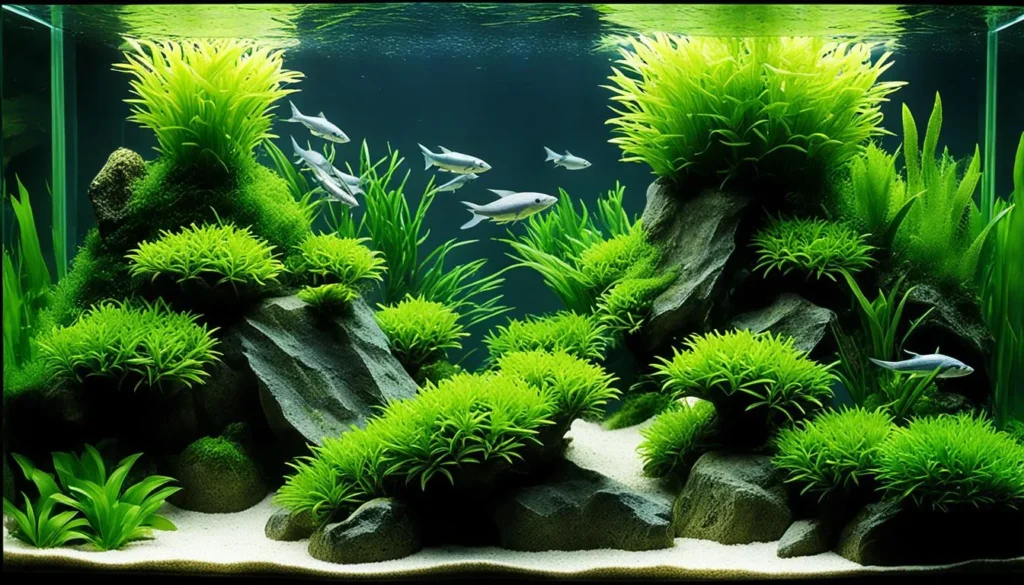
Key Takeaway
- Dwarf Chain Sword is a popular aquatic plant that creates lush carpet aquascapes.
- It is a low-maintenance and beginner-friendly plant, perfect for freshwater tanks.
- The plant forms a dense carpet of foliage, enhancing aquarium aesthetics.
- Dwarf Chain Sword is versatile and adaptable, thriving in various water conditions.
- Its vibrant green color and slender leaves add visual appeal to any aquarium.
Quick Stats
| Attribute | Details |
| Family Name | Alismataceae |
| Origin | North and South America |
| Height | 5-10 cm (2-4 inches) |
| pH Range | 6.0 – 7.5 |
| CO2 Requirement | Low to Moderate |
| Growth Rate | Fast |
| Care Level | Easy to Moderate |
| Color Form | Green, with narrow, linear leaves |
| Water Conditions | 20-28°C (68-82°F), adaptable to a wide range of hardness |
| Max Size | Leaves up to 10 cm (4 inches) long |
| Lighting | Moderate to High |
| Supplements | CO2 beneficial but not necessary; liquid fertilizers and root tabs can enhance growth |
| Placement | Foreground, ideal for carpeting |
| Propagation | By runners |
What Is Dwarf Chain Sword Plant?
The Dwarf Chain Sword plant, or Echinodorus tenellus, is a popular aquatic plant that adds beauty and vibrancy to freshwater tanks.
It is highly sought after for its ability to create lush carpet aquascapes due to its low maintenance requirements and striking appearance.
Let’s explore the origins, natural habitat, distinctive features, growth patterns, plant family, and common varieties of the Dwarf Chain Sword plant.

Origins And Natural Habitat
- The Dwarf Chain Sword plant is native to the southeastern United States and is primarily found in areas with lowland marshes, swamps, and wetland habitats.
- It thrives in submerged and emersed conditions, making it adaptable to various aquatic environments.
- This plant has also been successfully cultivated and grown in aquariums worldwide, becoming a staple in freshwater tanks.
Distinctive Appearance And Growth
- The Dwarf Chain Sword plant is characterized by its slender and elongated leaves, which form dense mats resembling a carpet.
- Its leaves are typically light green, adding a vibrant touch to the aquarium.
- As the name suggests, the plant grows in a chain-like pattern, with runners spreading horizontally and producing new plantlets along the way.
- With proper care and favorable conditions, this plant can form a beautiful and dense carpet in the aquarium.
Light Intensity And Color Spectrum
- The intensity of light and the color spectrum it emits are two critical aspects to consider when providing lighting for Dwarf Chain Swords. These plants require moderate to high light intensity to thrive.
- For optimal growth, it is recommended that light be provided between 50 and 100 lumens per liter. This ensures that the plants receive sufficient energy for photosynthesis and promotes lush, carpet-like growth.
- Regarding the color spectrum, Dwarf Chain Swords prefer light with a temperature of around 6500K to 7500K. This range simulates natural daylight and enhances the plants’ overall appearance and coloration.
- It is best to avoid lighting that leans towards the red or blue spectrum, as it can hinder the plants’ growth and appearance.
Temperature Tolerance Range
- Dwarf Chain Swords thrive within a temperature tolerance range of 72 to 82 degrees Fahrenheit (22 to 28 degrees Celsius).
- Maintaining a stable temperature within this range is important to support their healthy growth.
- Fluctuations and extreme temperatures should be avoided to prevent stress and potential damage to the plants.
Importance Of Water Quality
- Water quality plays a crucial role in the healthy growth of Dwarf Chain Swords. They thrive in clean and well-maintained water conditions.
- It is important to regularly test and monitor water parameters, including ammonia, nitrite, nitrate, and phosphate levels.
- Controlling and maintaining these parameters will contribute to a healthy aquatic environment and optimal plant growth.
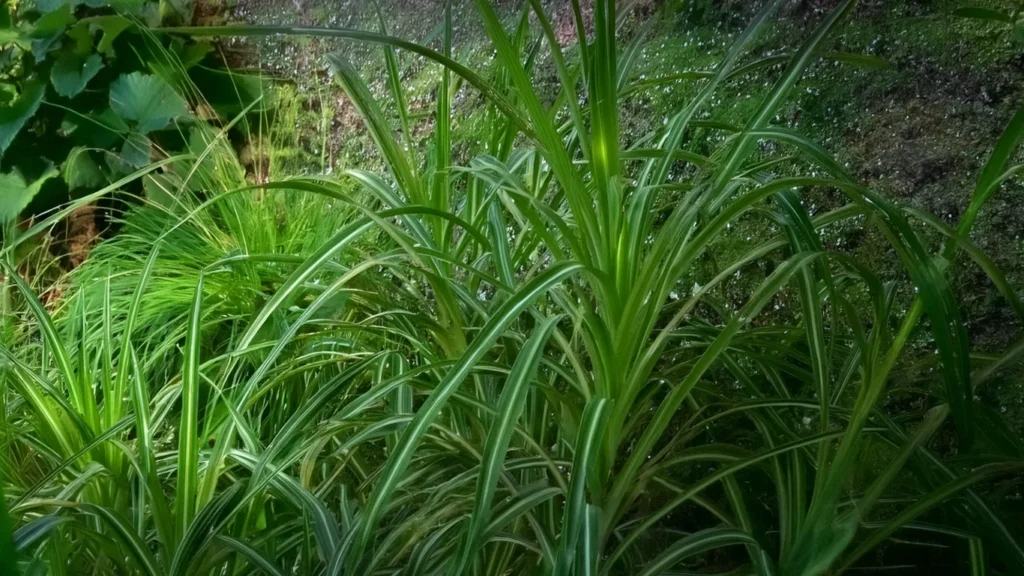
Choosing The Right Substrate
- Sand: Sand is a common substrate choice for aquascapes, providing a natural look and feel. It is gentle on the delicate roots of Dwarf Chain Swords and allows for easy planting. However, sand may compact over time, leading to limited nutrient circulation and the potential for anaerobic conditions.
- Aquarium Soil: Aquarium soil, specifically designed for planted tanks, is rich in nutrients and promotes healthy plant growth. It creates a fertile environment by gradually releasing essential minerals. However, it may require additional fertilization and can sometimes cloud the water initially.
- Gravel: Gravel is a versatile substrate option that allows for good water flow and oxygenation. It provides stability for the plants and prevents excessive nutrient buildup. However, it may not retain nutrients as effectively as other substrates and may require root tabs for adequate nutrition.
- Aquarium Substrate Mix: A combination of different substrates, such as sand and gravel or soil and sand, can offer a balanced approach. It provides a range of particle sizes and improves nutrient circulation. However, careful layering and maintenance are required to prevent substrate separation.
Placement In The Tank
- Foreground Plant: Dwarf chain sword is typically used as a foreground or midground plant due to its relatively low height and spreading growth habit. Place it in the front or middle areas of the aquarium to create a lush carpeting effect or to fill in open spaces between larger plants.
- Group Planting: Plant dwarf chain sword in clusters or groups rather than spacing individual plants evenly across the substrate. This helps create a more natural appearance and encourages the formation of a dense carpet of foliage.
- Substrate Coverage: Ensure that the substrate where you plant the dwarf chain sword is nutrient-rich and well-aerated. Plant each individual plantlet firmly into the substrate, leaving enough space between them to allow for spreading and growth.
- Lighting and Water Flow: Provide moderate to high lighting and gentle water flow for optimal growth of dwarf chain sword. Position the plants where they can receive sufficient light without being overshadowed by taller plants. Additionally, avoid placing them in areas with strong water currents that may uproot or damage the delicate roots.

Recommended Tank Size
- Nano Tanks: Suitable for small setups and nano aquariums of around 5 gallons (19 liters) or more. In these tanks, dwarf chain sword can be used as a foreground plant to create a lush carpeting effect.
- Small to Medium Tanks: Ideal for tanks ranging from 10 to 30 gallons (38 to 114 liters). In these tanks, dwarf chain sword can be planted in groups to cover larger areas of the foreground or midground.
- Large Tanks: Suitable for tanks larger than 30 gallons (114 liters). In larger tanks, dwarf chain sword can be used to create expansive carpeting or to fill in open spaces between larger plants.
RELATED: A Comprehensive Guide To Planting Cryptocoryne Wendtii Tropica
Complementary Aquatic Plants For Aquascaping
- Java Moss (Vesicularia dubyana): This versatile aquatic moss can be used to create stunning textures and contrast with the lush carpet of Dwarf Chain Swords.
- Anubias nana: With its dark green foliage and compact size, Anubias nana adds a touch of elegance to the aquascape while creating interesting visual layers.
- Bucephalandra: Known for its beautiful and unique leaves, Bucephalandra provides a striking visual contrast against the vibrant green carpet of Dwarf Chain Swords.
- Microsorum pteropus (Java Fern): This hardy fern can be attached to driftwood or placed in the substrate, adding height and creating a natural and lush backdrop for the aquascape.
Nutritional Needs Of The Plant
The nutritional needs of dwarf chain sword (Echinodorus tenellus) encompass both micro and macro nutrients essential for its growth and development:
Macro Nutrients
- Nitrogen (N): Crucial for overall plant growth, nitrogen is a primary component of chlorophyll, the pigment responsible for photosynthesis.
- Phosphorus (P): Essential for energy transfer within the plant and vital for root development and flowering.
- Potassium (K): Supports various physiological processes in plants, including water uptake, enzyme activation, and disease resistance.
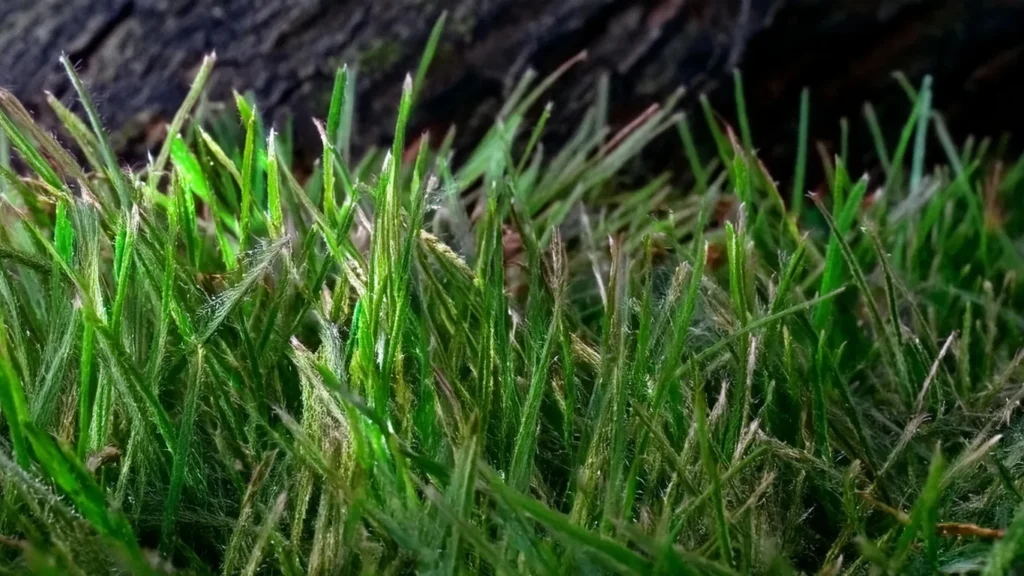
Micro Nutrients
- Iron (Fe): Essential for chlorophyll synthesis and overall plant metabolism, iron deficiency can lead to yellowing of leaves (chlorosis).
- Magnesium (Mg): A component of chlorophyll molecules, magnesium is vital for photosynthesis and enzyme activation.
- Calcium (Ca): Important for cell wall structure and integrity, as well as for regulating nutrient uptake and transport.
- Zinc (Zn), Copper (Cu), Manganese (Mn), Boron (B), Molybdenum (Mo), and others: These micronutrients play crucial roles in various metabolic processes, enzyme activation, and overall plant health.
Cultivating Plant At Home
Cultivating dwarf chain sword (Echinodorus tenellus) at home involves several steps to ensure successful growth and establishment:
Preparing For Growth
- Choose a suitable aquarium substrate: Dwarf chain sword prefers nutrient-rich substrates like nutrient-rich aquarium soil or sand. Ensure that the substrate is well-aerated and has good drainage.
- Provide adequate lighting: Place the aquarium in a well-lit area or use a suitable aquarium light to ensure the plant receives sufficient light for photosynthesis.
- Maintain optimal water parameters: Dwarf chain sword thrives in slightly acidic to neutral water with a pH range of 6.5 to 7.5 and temperatures between 72°F to 82°F (22°C to 28°C). Ensure proper filtration and circulation to maintain water quality.
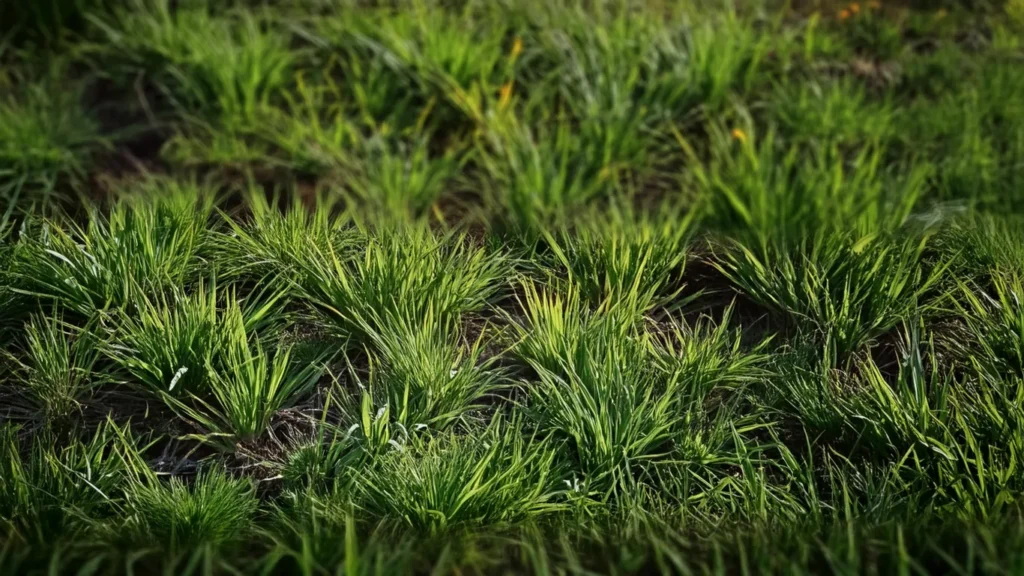
Planting
- Planting dwarf chain sword can be done by separating the plant into smaller sections or individual runners. Gently separate the plantlets from the parent plant and plant them into the substrate using tweezers or planting tools.
- Plant each section at regular intervals to create a dense carpeting effect. Ensure that the roots are well-covered with substrate to promote establishment and growth.
Initial Care
- Trim any damaged or decaying leaves before planting to encourage healthy growth.
- Provide regular water changes to maintain water quality and prevent nutrient imbalances.
- Supplement with a liquid fertilizer containing essential macro and micronutrients to support growth. Follow the manufacturer’s instructions for dosing.
- Monitor for signs of deficiency or nutrient imbalance, such as yellowing leaves or stunted growth, and adjust fertilization or lighting accordingly.
- Ensure that the plant receives adequate light without being shaded by other plants or decorations in the aquarium.
Plant Propagation Tips
- Gentle Handling: Handle the plant with care to avoid damaging delicate roots and leaves during the propagation process.
- Healthy Parent Plant: Start with a healthy parent plant that shows vigorous growth and has no signs of disease or nutrient deficiency.
- Timing: Choose the right time for propagation, ideally during the plant’s active growth phase when it’s more likely to successfully establish new growth.
- Division Technique: Use sharp, clean scissors or pruning shears to divide the plant into smaller sections, ensuring each section has sufficient roots and foliage for successful growth.
- Runner Management: Monitor the plant for the development of runners, and allow them to produce plantlets before detaching and replanting them.
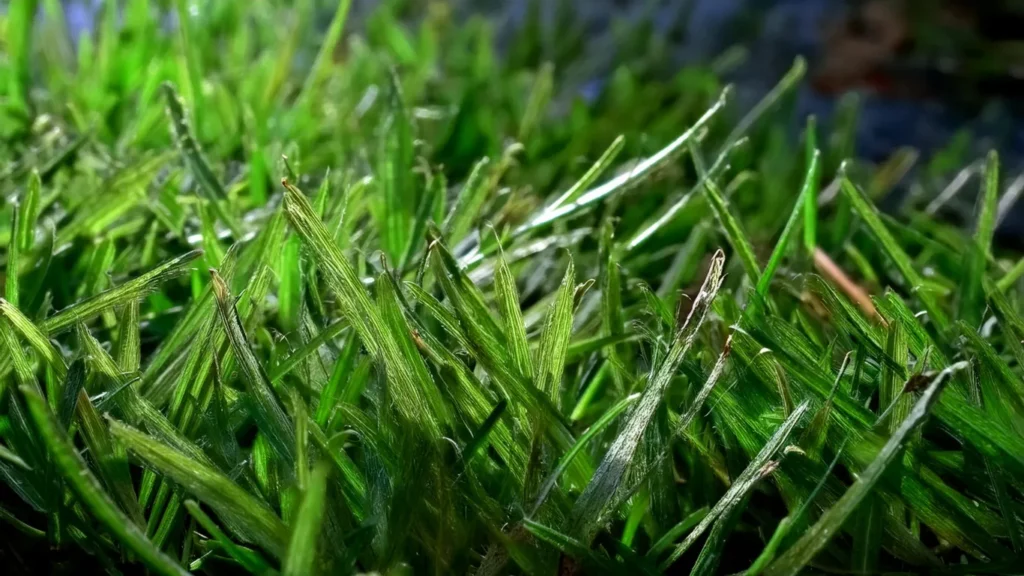
Identifying And Treating Common Diseases
Dwarf Chain Swords are generally hardy plants but can still be susceptible to certain diseases. Common diseases that may affect your Dwarf Chain Swords include:
- Brown Spot Disease: Characterized by small brown spots on the leaves. It can be treated by improving water circulation and using an appropriate fungicide.
- Leaf Melting: This occurs when the plant’s older leaves start to decay. It is a natural process, and removing the decaying leaves will promote new growth.
- Root Rot: Caused by overwatering or poor drainage, root rot can lead to wilting and decay of the plant. To treat root rot, remove affected parts and improve drainage in the aquarium.
Beneficial Aspects Of Dwarf Chain Swords In The Ecosystem
- In the aquatic ecosystem, Dwarf Chain Swords play a crucial role in providing several beneficial aspects. These aquatic plants improve water quality, enhance oxygenation, and create a favorable habitat for various aquatic organisms.
- The presence of Dwarf Chain Swords helps in maintaining water quality by absorbing excess nutrients, such as nitrates and phosphates, which can otherwise lead to algae overgrowth. By efficiently utilizing these nutrients, Dwarf Chain Swords prevent their accumulation and potential harm to the ecosystem.
- Additionally, the dense vegetation created by Dwarf Chain Swords promotes water oxygenation. Through photosynthesis, these plants release oxygen, ensuring a healthy oxygen supply for fish and other aquatic organisms. The availability of sufficient oxygen is vital for the overall well-being and survival of the aquatic life in the ecosystem.
- Dwarf Chain Swords also contribute to habitat creation within the aquarium. Their lush carpet-like growth provides hiding places and shelter for small fish, invertebrates, and fry. This helps in reducing stress levels and increases the chance of successful breeding and survival of the aquatic inhabitants.
- With their beneficial impact on water quality, oxygenation, and habitat creation, Dwarf Chain Swords prove to be essential components of a balanced and thriving aquatic ecosystem in your aquarium.
Conclusion
Dwarf Chain Sword is a versatile and captivating aquatic plant that has captured the hearts of aquarists worldwide.
Its low-maintenance nature and beginner-friendly characteristics make it a perfect choice for both experienced hobbyists and those new to the world of aquascaping.
Throughout this article, we have explored the origins, distinctive appearance, and growth patterns of the Dwarf Chain Sword.
We have also discussed the necessary steps for setting up an aquarium and creating an optimal environment for the healthy growth of this remarkable plant.
By choosing the right substrate, providing appropriate lighting, and selecting complementary aquatic plants, you can achieve a lush carpet aquascape that will transform your freshwater tank into a captivating underwater paradise.
Proper feeding, fertilization, and regular maintenance are essential for the continued health and vitality of the Dwarf Chain Sword.
Incorporating Dwarf Chain Swords into your aquarium will enhance its visual appeal and contribute to a thriving ecosystem by improving water quality and oxygenation and providing a natural habitat for fish and other aquatic organisms.
Frequently Asked Question
What Makes Dwarf Chain Sword A Preferred Choice For Aquarium Carpeting Compared To Other Foreground Plants?
Dwarf Chain Sword is favored for its relatively easy care requirements, rapid growth rate, and ability to adapt to a wide range of water conditions, making it accessible to beginners and experienced aquarists.
Its slender, grass-like leaves and propensity to spread through runners create a lush, natural-looking carpet that enhances the aesthetics of an aquarium.
Unlike some other carpeting plants, it can thrive in moderate lighting conditions and does not strictly require CO2 supplementation, though such additions can boost its growth and density.
How Can I Encourage Faster Spreading And Denser Growth Of My Dwarf Chain Sword Carpet?
To promote a faster spread and denser growth of Dwarf Chain Sword, ensure it’s planted in a nutrient-rich substrate and receives adequate lighting.
Moderate to high lighting encourages the plant to produce more runners and fill in the foreground more quickly. Regular dosing of liquid fertilizers, especially those rich in iron and CO2 supplementation, can further enhance growth and vitality.
Additionally, periodic trimming of taller leaves can stimulate the plant to focus energy on lateral spread rather than vertical growth.
Is Dwarf Chain Sword Suitable For Tanks Without Co2 Injection?
Dwarf Chain Sword can grow well in aquariums without CO2 injection, making it a versatile choice for low-tech and high-tech setups.
While CO2 supplementation can enhance its growth rate and density, this plant can adapt to various conditions and perform well. Ensuring a nutrient-rich substrate and adequate lighting is critical to its success in non-CO2-injected tanks.
How Do I Propagate Dwarf Chain Sword In My Aquarium?
Dwarf Chain Sword propagates through the production of runners, which are horizontal stems that extend from the base of the parent plant.
To propagate, simply allow these runners to develop small plantlets with roots and leaves. Once these plantlets have established themselves, they can be carefully separated from the main runner with scissors and replanted elsewhere in the substrate.
This method allows for easy propagation and the natural expansion of the carpet across the aquarium floor.
What Common Issues Might I Encounter With Dwarf Chain Sword, And How Can I Address Them?
Common issues with Dwarf Chain Sword include yellowing leaves, slow growth, or failure to spread, often due to inadequate lighting, nutrient deficiencies, or insufficient substrate depth. Yellowing leaves may indicate a need for more iron or overall nutrient supplementation.
Slow growth or lack of spreading can often be improved by increasing light intensity or ensuring the substrate is rich in nutrients and deep enough to accommodate the root system.
Regularly testing water parameters and adjusting your maintenance routine can help address these issues and promote healthy growth.
- Unveiling The Wonders Of Riccia Fluitans In Aquascapes - August 7, 2024
- Vallisneria Gigantea Var. Guide To Care And Cultivation At Home - July 31, 2024
- Vesicularia Dubyana Care & Growth Guide Tips For Beginner Gardeners - July 30, 2024
